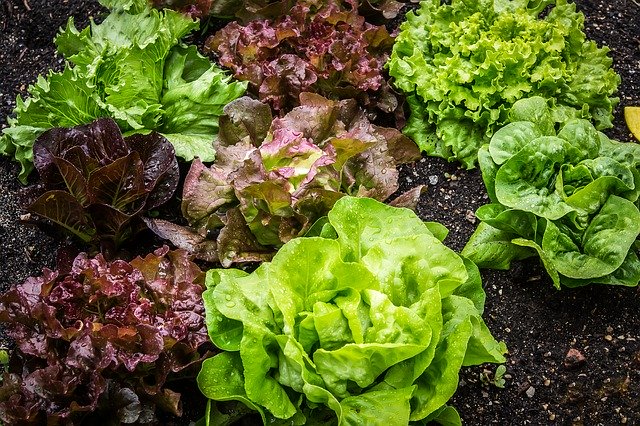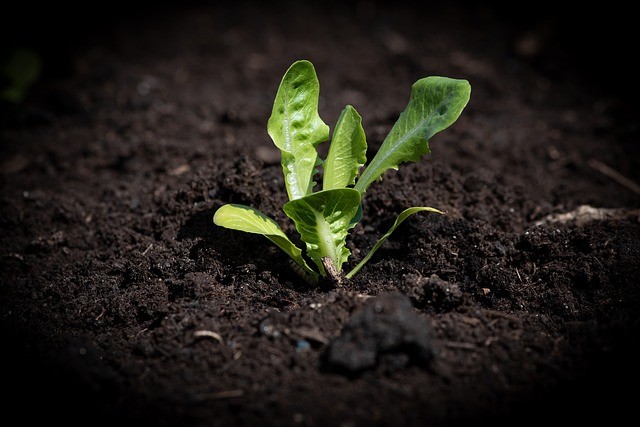Lettuces are a quick growing salad crop that will reward you with little effort. If you plant different varieties, you can enjoy a harvest of lettuce all year round.
Lettuces can be either loose leafed varieties, or lettuces that produce a heart of dense leaves.

How to Sow Lettuce seeds
Lettuce seeds can be sown throughout spring and summer, depending of the variety. It is a good idea to stagger the sowing, so you prolong your harvest and you don’t get too many lettuces ready to harvest at once.
Lettuce seeds can be sown outside in garden soil, or in seed trays or module and planted out when they are big enough to handle. It is preferable to sow straight in the veggie patch, as lettuce plants do not like to be moved.
Lettuces like cooler conditions, so a position in light or partial shade will help your lettuce plants thrive and grow well.
First, prepare the soil by digging in some good garden compost of well-rotted manure. Rake to a fine tilth, or texture. Make a seed drill approximately half an inch deep, a garden cane pressed into the soil works well for this.
Sow lettuce seeds thinly to allow them room to grow and mature, and to reduce the amount of thinning out needed. If you have more than one row of lettuce plants, space them so that you can easily walk between the rows.

As the seedlings grow, thin them out so there is approximately six inches between each lettuce plant. Some varieties of lettuce that are large will benefit from a larger distance between plants.
A rule of thumb to follow when growing lettuce is that is takes approximately 6-8 weeks between sowing and harvest for loose-leafed lettuce varieties, and 9-14 weeks for hearting varieties.
Growing Lettuce in Pots
If you don’t have the space to plant rows of lettuces in a veggie patch or garden, they also grow well in pots and containers. If you want a fully grown, mature lettuce to harvest, use a decent sized pot and plant just one lettuce.
Another method of growing lettuce in containers is to put a few plants in one container and just harvest the leaves by snipping them off the plant as they grow. Most lettuces will sprout new leaves to replace the harvested ones. This ‘cut and come again’ style of growing is great if you want a quick, long lasting crop of leaves.
Keep an eye on the moisture levels in the soil, as pots tend to dry out quickly.
Caring for Lettuce Plants
Slugs and snails love to eat lettuce, so protect them by using an organic deterrent. Chemical laced pellets will work, although they damage wildlife and are not a good thing to use in the garden. Would you want to eat a lettuce that has absorbed chemicals from slug pellets? We only recommend organic pest control, and there are plenty of options. Read more about natural pest control here.
Keep the area around the growing lettuce plants free from weeds, and water keep the soil moist.
Harvesting Lettuce
Snip off lettuce leaves as soon as they are of a size that is worthwhile eating.
For hearting lettuce varieties, you should pick them once they have formed a firm heart. If you leave it too long before harvesting, they will bolt, meaning they flower and set seed.
A good thing about growing lettuce is that the seeds are inexpensive, so you get good value for money. Of the variety shown below, you get almost 2000 seeds for less that £2! That’s plenty of lettuce for you, your friends and most of their friends too!
See A-Z growing guide for more on homegrown fruits and veggies.

